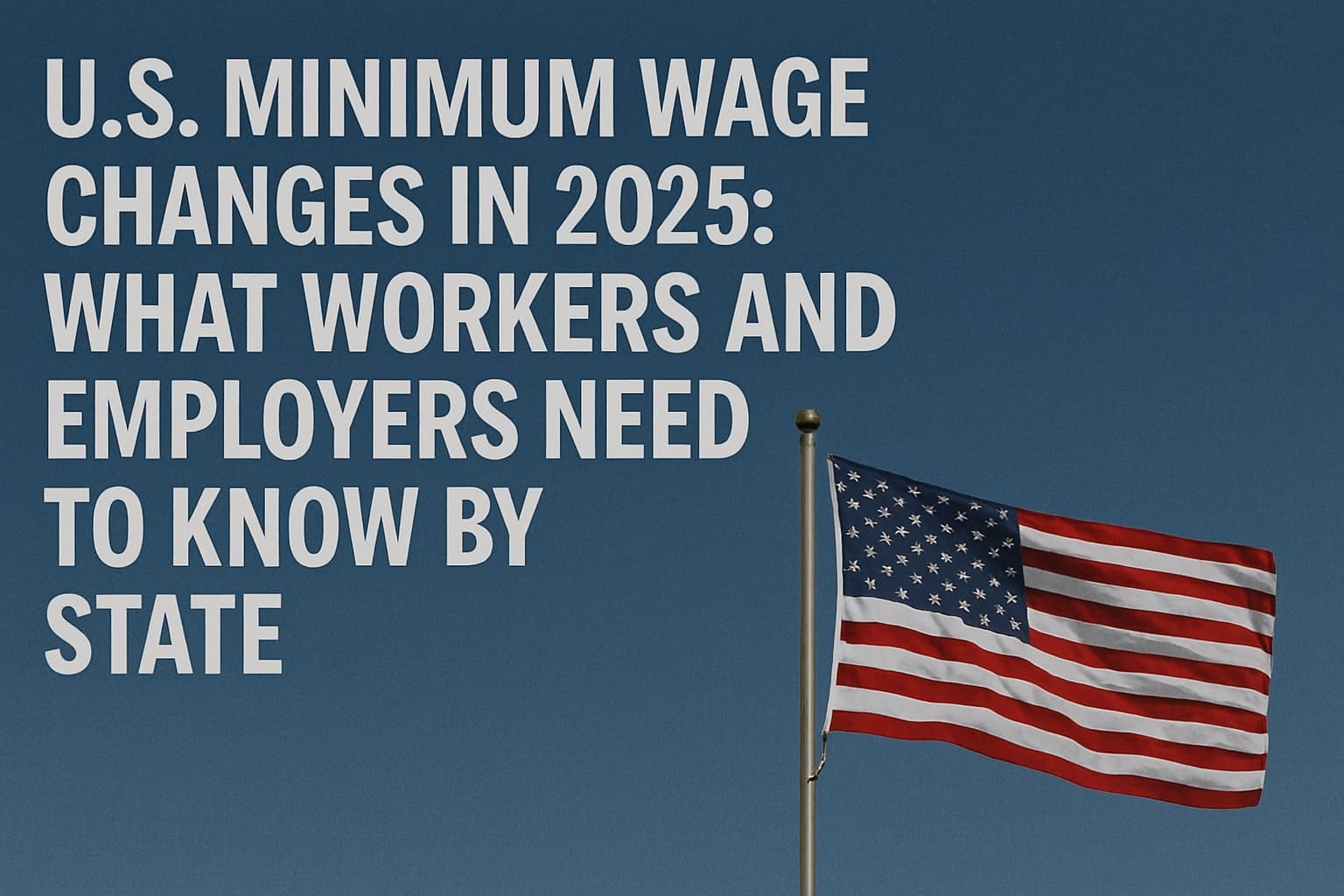With inflation and the cost of living surging nationwide, minimum wage laws in the U.S. have evolved rapidly in 2025. While the federal minimum wage remains unchanged at $7.25/hour, over 20 states and dozens of cities have raised their local minimum wages, with some topping $16 per hour. This guide breaks down the latest minimum wage updates in America, state-by-state changes, and what they mean for employees and businesses.
Federal vs. State Minimum Wage in 2025
The federal minimum wage has not increased since 2009, prompting many states to take action independently. As a result, there’s now a significant wage gap between states adhering to federal law and those pushing for living wage standards.
📌 Examples of 2025 State Minimum Wages:
- Washington: $16.66/hour (highest statewide rate)
- California: $16.50/hour (cities like San Francisco and LA exceed $18/hour)
- Connecticut: $16.35/hour (adjusted for inflation)
- Delaware: $15.00/hour (final stage of phased plan)
States like Texas, Georgia, and North Carolina still use the federal $7.25/hour, unless local laws mandate higher rates.
Federal Contractor Minimum Wage: $17.75 in 2025
Under Executive Order 14026, workers on federal contracts are now entitled to $17.75/hour in 2025. This ensures federally contracted employees aren’t left behind as living costs rise.
Tipped Workers: New Laws in Several States
The federal tipped wage remains at $2.13/hour, but many states are increasing or eliminating the tipped wage gap:
- California & Washington => Employers must pay the full minimum wage, regardless of tips.
- New York & Illinois => Have higher tipped wage rates and are phasing out the subminimum wage model.
💡 Tip: If you’re a tipped worker, always verify your state’s wage rules to ensure you’re being paid legally.
Economic Impact of Minimum Wage Increases
✅ Benefits
• More Consumer Spending: Workers with higher incomes tend to spend more locally.
• Lower Turnover: Higher wages reduce employee exits and hiring costs.
• Poverty Reduction: Workers can better afford housing, food, and healthcare.
⚠️ Challenges
• Higher Labor Costs: Especially for small and medium-sized businesses.
• Job Cuts & Automation: Some employers may reduce staff or invest in technology.
• Price Increases: Wage hikes could translate into higher prices in sectors like food and retail.
Despite concerns, economists often find that gradual increases allow businesses to adjust more effectively without major job losses.
What Workers Should Do
✔ Know Your Rights
Check your state’s labor department or the U.S. DOL Minimum Wage Map to ensure compliance.
✔ Monitor Your Pay
Check your pay stub and verify your hourly rate reflects updated wage laws.
✔ Report Issues
If underpaid, report it to your HR department, state labor board, or the U.S. Department of Labor’s Wage and Hour Division.
What Employers Should Do
📊 Budget Strategically
Account for higher wage expenses and review financial plans accordingly.
⚙️ Adjust Operations
Look into automation, process improvements, or productivity tools to maintain margins.
📋 Stay Compliant
Update payroll systems and HR policies. Failure to comply may result in fines or lawsuits.
Frequently Asked Questions (FAQs)
Q: Will the federal minimum wage increase in 2025?
A: Not yet. However, proposed legislation like the Raise the Wage Act aims to increase it to $17/hour by 2028.
Q: How can I find my state’s current minimum wage?
A: Visit your state’s Department of Labor website or check the U.S. DOL’s official map.
Q: Do small businesses have to follow the same laws?
A: Yes, unless the state provides specific exemptions—though these are rare and often industry-specific.
Q: What if my employer refuses to pay the legal minimum wage?
A: First raise the issue internally. If unresolved, file a complaint with your state labor board or the Wage and Hour Division.
Final Thoughts
The minimum wage landscape in 2025 is more diverse than ever, with local and state governments leading the charge toward fairer pay. While debates continue over the economic impact, it’s clear that many jurisdictions view wage hikes as a necessary tool for addressing inflation and income inequality.
Whether you’re an employee seeking fair pay or an employer adjusting to new laws, staying informed, compliant, and proactive is essential in navigating the evolving wage environment.


